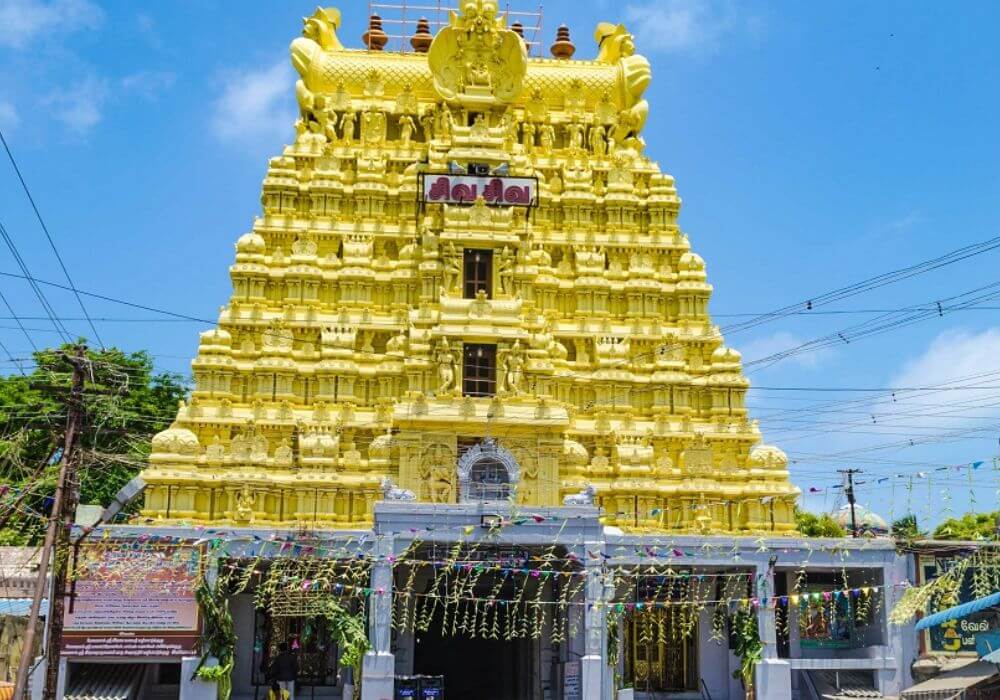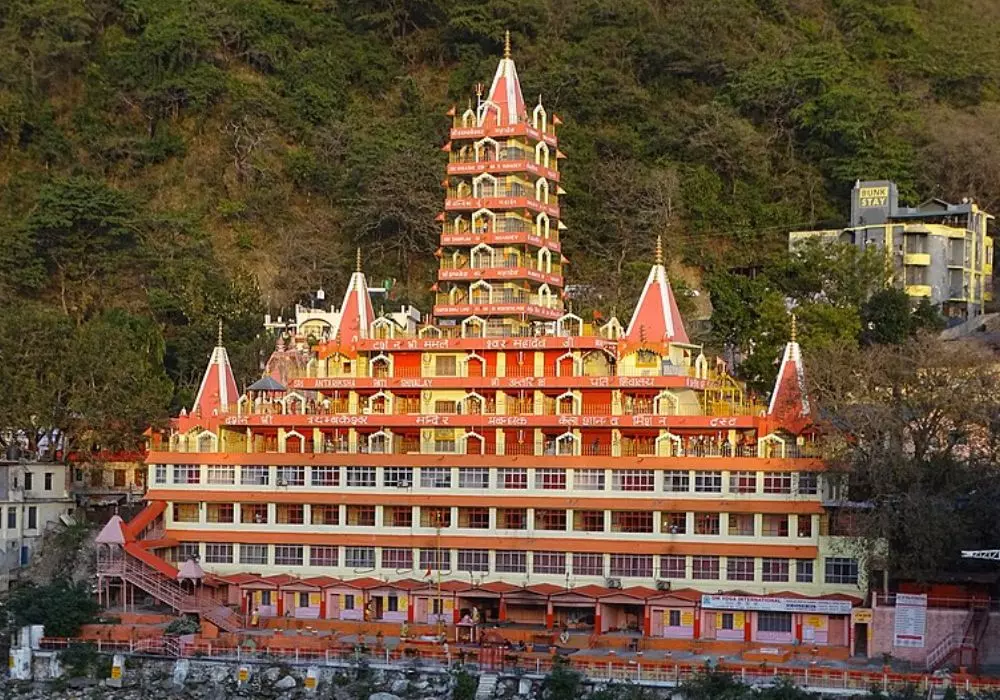The Ramanathaswamy Temple, located in Rameswaram, Tamil Nadu, is one of the holiest shrines in India and holds great significance in Hindu mythology and religious practices. Believed to have been established by Lord Rama, the temple is dedicated to Lord Shiva and is renowned for its architectural grandeur and spiritual aura.
As one of the most significant temples in India, the Ramanathaswamy Temple holds a special place in the hearts of devotees. Its history dates back centuries, with legends and myths woven into its very fabric.
According to mythology, Lord Rama, accompanied by his consort Sita and his loyal devotee Hanuman, worshiped Lord Shiva here after returning from Lanka. The temple’s architecture is a marvel in itself. The towering gopurams (gateway towers) and the intricately carved pillars are a testament to the skill and craftsmanship of the artisans of yore.
The temple’s longest corridor among all Hindu temples in India, stretching over 1200 meters, is a sight to behold, with its myriad of sculptures and carvings depicting scenes from Hindu mythology.
The Ramanathaswamy Temple is not just a place of worship; it’s a spiritual sojourn, a journey of self-discovery and enlightenment. Pilgrims flock to this sacred site to seek the blessings of the divine and to immerse themselves in the spiritual aura that permeates the air.
For anyone seeking a deeper understanding of India’s religious and cultural heritage, a visit to the Ramanathaswamy Temple is a must. It’s a chance to connect with the divine, to witness firsthand the architectural marvels of ancient India, and to experience the spiritual essence that is so intrinsic to the temples of India.
History of the Ramanathaswamy Temple
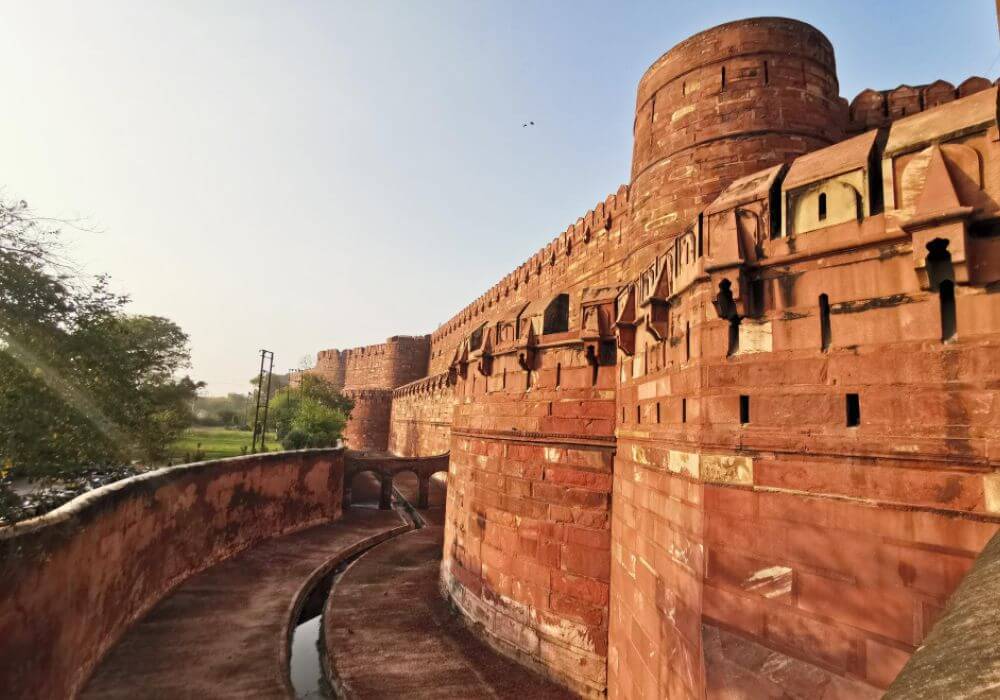

The history of the Ramanathaswamy Temple is a tale of devotion, resilience, and architectural splendor that spans several centuries. Believed to have been established in the 12th century, the temple has undergone numerous renovations and expansions over the years, each contributing to its grandeur and significance.
The temple’s origins are deeply rooted in Hindu mythology, with legends suggesting that Lord Rama, along with his consort Sita and his loyal devotee Hanuman, worshiped Lord Shiva here upon returning from Lanka after defeating the demon king Ravana.
It is said that Lord Rama constructed a lingam (symbol of Lord Shiva) out of sand and worshiped it as a gesture of gratitude for Lord Shiva’s blessings. Over the centuries, various dynasties, including the Pandya, Chola, and Nayak dynasties, have contributed to the temple’s construction and expansion.
The temple’s architectural style is predominantly Dravidian, characterized by its towering gopurams (entrance towers), intricately carved pillars, and majestic halls. Each dynasty added its own unique touch to the temple, enriching its architectural and cultural heritage.
Despite facing numerous challenges, including invasions and natural disasters, the Ramanathaswamy Temple has stood the test of time, serving as a beacon of hope and faith for millions of devotees. Today, it stands as a testament to the enduring legacy of Hinduism and the architectural prowess of ancient India.
Architecture and Design
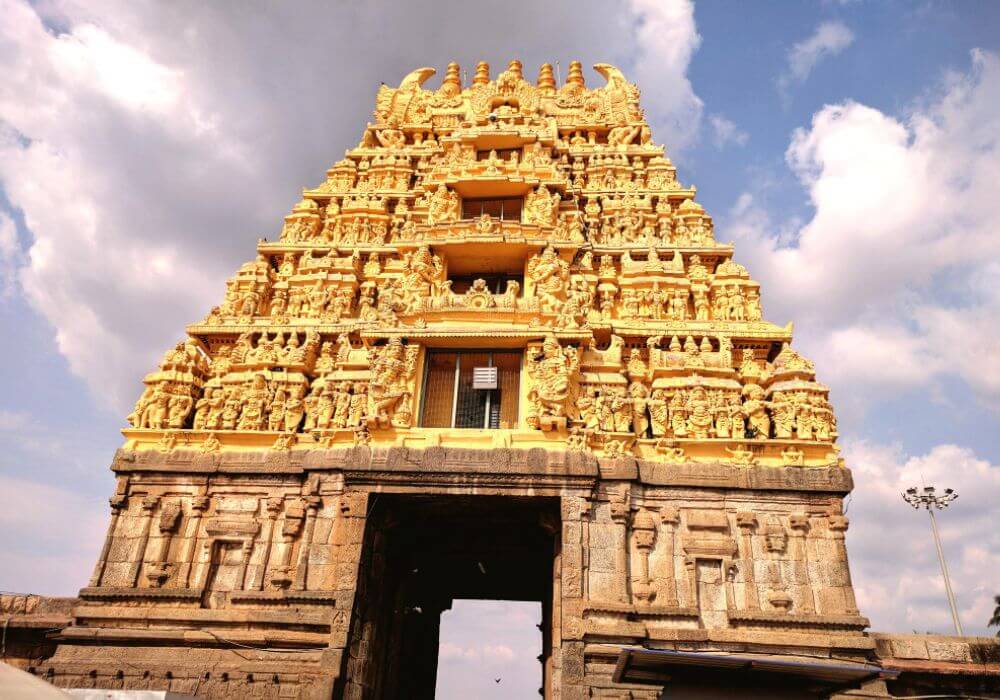

The Ramanathaswamy Temple is a magnificent example of Dravidian architecture, characterized by its towering gopurams, intricately carved pillars, and spacious halls. The temple’s architecture is a testament to the skill and craftsmanship of the artisans who built it, with every detail reflecting the rich cultural heritage of the region.
One of the most striking features of the temple is its towering gopurams, or entrance towers, which are adorned with elaborate sculptures and carvings depicting scenes from Hindu mythology. These gopurams are not only architectural marvels but also serve as symbolic gateways to the divine, inviting devotees into the sacred space of the temple.
Inside the temple, visitors are greeted by a series of mandapams, or halls, each more impressive than the last. The corridors are lined with intricately carved pillars, depicting gods, goddesses, and mythical creatures, all sculpted with remarkable detail and precision.
The sanctum sanctorum of the temple houses the main deity, Lord Shiva, in the form of a lingam. The sanctum is surrounded by smaller shrines dedicated to various deities, each with its own unique architectural style and design.
Main Deity of Ramanathaswamy Temple


The Ramanathaswamy Temple is dedicated to Lord Shiva, who is worshiped here in the form of a lingam, a symbol of his cosmic energy. Lord Shiva is one of the principal deities in Hinduism and is revered as the destroyer of evil and the transformer of the universe. He is also considered the supreme being who creates, protects, and destroys the universe.
The significance of Lord Shiva in the Ramanathaswamy Temple is profound, as it is believed that worshiping him here can wash away one’s sins and grant liberation from the cycle of birth and death.
The lingam in the sanctum sanctorum is considered one of the 12 Jyotirlingas, which are believed to be manifestations of Lord Shiva. Devotees visiting the temple perform various rituals to seek the blessings of Lord Shiva.
One of the most important rituals is the Abhishekam, or ritual bathing of the lingam, which is believed to purify the soul and bring peace and prosperity. Other rituals include offering flowers, fruits, and other offerings to the deity, as well as chanting prayers and hymns in praise of Lord Shiva.
Temple Complex


The Ramanathaswamy Temple complex is a sprawling architectural marvel spread over an area of approximately 15 acres. It consists of several shrines, mandapams (halls), and sacred tanks, all of which add to the grandeur and spiritual significance of the temple.
At the heart of the complex lies the main sanctum sanctorum, which houses the lingam of Lord Shiva. The sanctum is surrounded by several smaller shrines dedicated to various deities, including Lord Rama and Goddess Parvati.
Each shrine is intricately carved and decorated, reflecting the artistic and architectural brilliance of the craftsmen of ancient India. The temple complex also features several mandapams, or halls, each serving a specific purpose.
The most notable among these is the thousand-pillared hall, which is renowned for its exquisite architecture and intricate carvings. This hall is used for various religious ceremonies and gatherings and is a popular spot for tourists and pilgrims alike.
In addition to the main sanctum and mandapams, the temple complex also includes several sacred tanks, or theerthams, which are believed to have divine properties. The most sacred of these is the Agni Theertham, where pilgrims take a ritual bath before entering the temple.
Cultural Significance
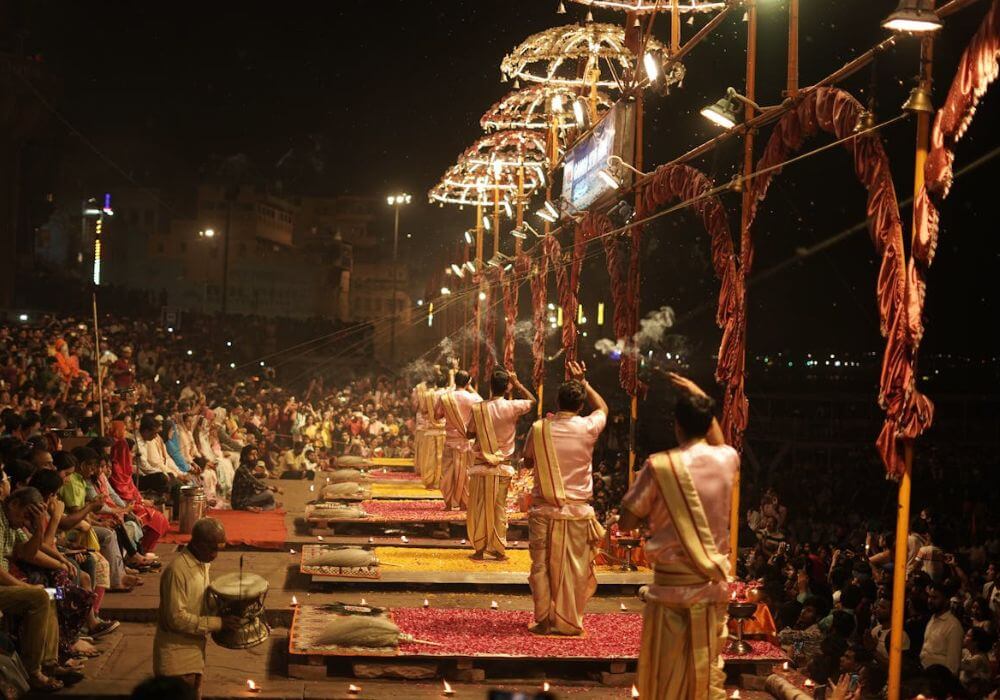

The Ramanathaswamy Temple holds immense cultural and spiritual significance in Hinduism, serving as a symbol of devotion and faith for millions of devotees. As one of the Char Dham pilgrimage sites, the temple is believed to be one of the holiest places in India, and a visit here is considered a sacred duty for devout Hindus.
The temple is not just a place of worship; it is also a center of cultural and spiritual learning. It is a repository of ancient traditions and practices, many of which are still followed to this day. The temple’s architecture, sculptures, and inscriptions provide valuable insights into the rich cultural heritage of the region and the history of Hinduism.
The Ramanathaswamy Temple is also renowned for its festivals and ceremonies, which are celebrated with great fervor and enthusiasm. The most famous of these is the Maha Shivaratri festival, which celebrates the marriage of Lord Shiva and Goddess Parvati.
During this festival, devotees from all over the country converge on the temple to offer prayers and seek blessings. Other important festivals celebrated at the temple include Navratri, Diwali, and Thaipusam.
These festivals are marked by elaborate rituals, processions, and cultural performances, making them a vibrant celebration of the region’s cultural heritage.
Visiting Information for Ramanathaswamy Temple
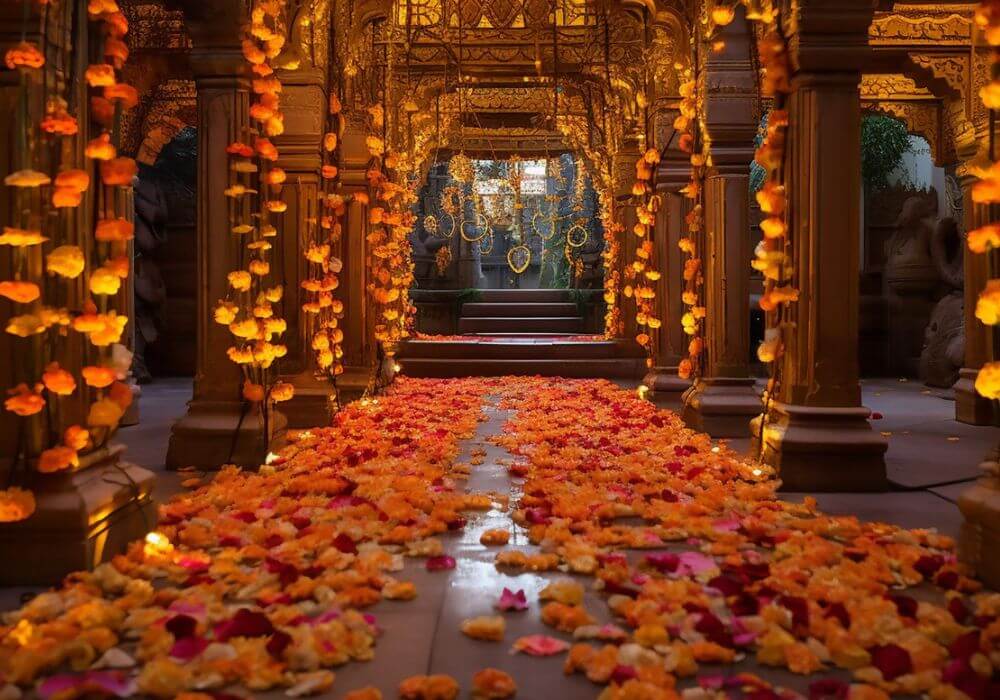

Timings: The Ramanathaswamy Temple is open for darshan from early morning to late evening. The temple timings may vary on special occasions and festival days.
Entry Fees: There is no entry fee to enter the temple. However, there may be charges for special darshan and pooja services.
Dress Code: Visitors are required to dress modestly. Men are advised to wear dhoti or mundu without shirts, while women are advised to wear saree or salwar kameez. Devotees can also rent or buy appropriate attire near the temple premises.
Photography: Photography is not allowed inside the temple complex.
Footwear: Shoes and footwear are not allowed inside the temple complex. There are facilities available for storing footwear outside the temple.
Tips for Visitors:
- Plan your Visit: The temple can get crowded, especially during festivals and weekends. Plan your visit accordingly to avoid long queues.
- Respect the Customs: Follow the temple customs and traditions. Maintain silence and switch off your mobile phones inside the temple premises.
- Stay Hydrated: Carry a water bottle with you, as it can get hot and humid in Rameswaram.
- Explore the Surroundings: Apart from the temple, explore the beautiful beaches and other attractions in Rameswaram.
Nearby Attractions in Rameswaram
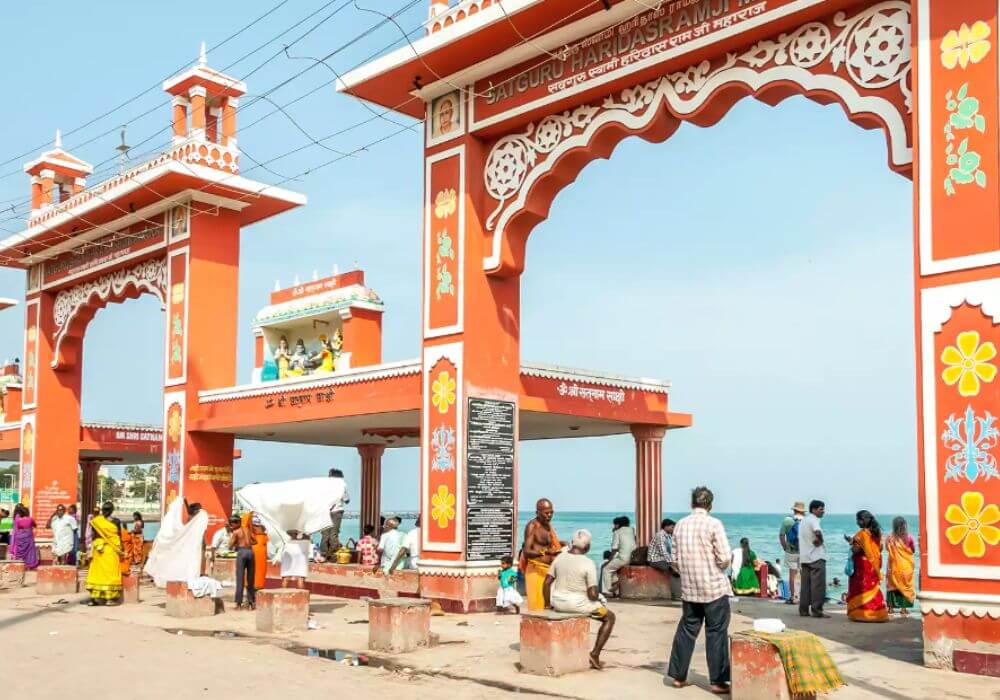

- Agni Theertham: The sacred beach located near the temple where pilgrims take a ritual bath before entering the temple.
- Rameswaram Beach: A serene beach with clear waters and soft sands, perfect for relaxing and enjoying the natural beauty.
- Dhanushkodi: A ghost town located at the eastern tip of Rameswaram island, known for its pristine beaches and ruins.
- Gandhamadhana Parvatham: A hillock that offers panoramic views of Rameswaram and has a temple dedicated to Lord Rama.
- Abdul Kalam Memorial: A memorial dedicated to Dr. APJ Abdul Kalam, showcasing his life and achievements.
Places to Eat Near Ramanathaswamy Temple


- Arya Bhavan: A popular vegetarian restaurant known for its South Indian dishes and sweets.
- Temple View Restaurant: Offers a variety of vegetarian and non-vegetarian dishes, with a view of the temple.
- Hotel Tamil Nadu: A government-run hotel that serves delicious South Indian meals at affordable prices.
- Fisherman’s Cove: A seafood restaurant known for its fresh catch and traditional coastal dishes.
Places to Shop Near Ramanathaswamy Temple
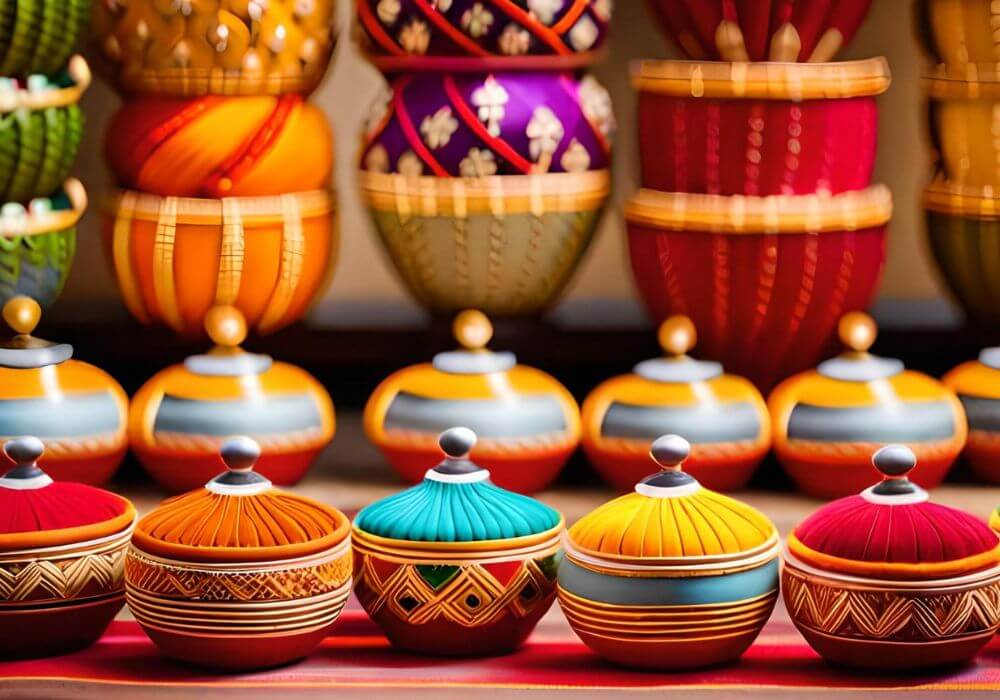

- Rameswaram Handicrafts: Shop for souvenirs and handicrafts made by local artisans, including shell crafts and jewelry.
- Sri Mahalakshmi Handicrafts: Offers a variety of religious items, including idols, prayer beads, and souvenirs.
- Rameswaram Silk Sarees: Known for its unique designs and quality silk sarees, perfect as a gift or for personal use.
- Local Markets: Explore the local markets near the temple for spices, snacks, and other traditional items unique to Rameswaram.
Conclusion
The Ramanathaswamy Temple in Rameswaram, Tamil Nadu, stands as a shining example of the spiritual richness and architectural grandeur that characterize temples in India. This ancient shrine, dedicated to Lord Shiva, is not just a place of worship but a spiritual sojourn that attracts devotees and tourists alike.
As one of the most prominent temples in India, the Ramanathaswamy Temple holds immense religious significance. It is believed to be one of the 12 Jyotirlinga temples, where Lord Shiva is worshipped in the form of a lingam, symbolizing the infinite nature of the divine.
The temple’s history is steeped in mythology and legend. According to Hindu mythology, Lord Rama, along with his consort Sita and devoted brother Lakshmana, visited Rameswaram on his way back to Ayodhya from Lanka. To seek penance for the sin of killing Ravana, Lord Rama established the lingam at Rameswaram, making it a sacred pilgrimage site for Hindus.
The architecture of the Ramanathaswamy Temple is a testament to the ingenuity of ancient Indian artisans. The temple’s towering gopurams (gateway towers) and intricate carvings depict scenes from Hindu mythology, captivating visitors with their beauty and detail.
A visit to the Ramanathaswamy Temple is not just a journey to a sacred place; it is a journey within oneself. The spiritual ambiance of the temple, coupled with its historical and architectural significance, makes it a must-visit destination for anyone seeking to explore the spiritual and cultural heritage of India.
